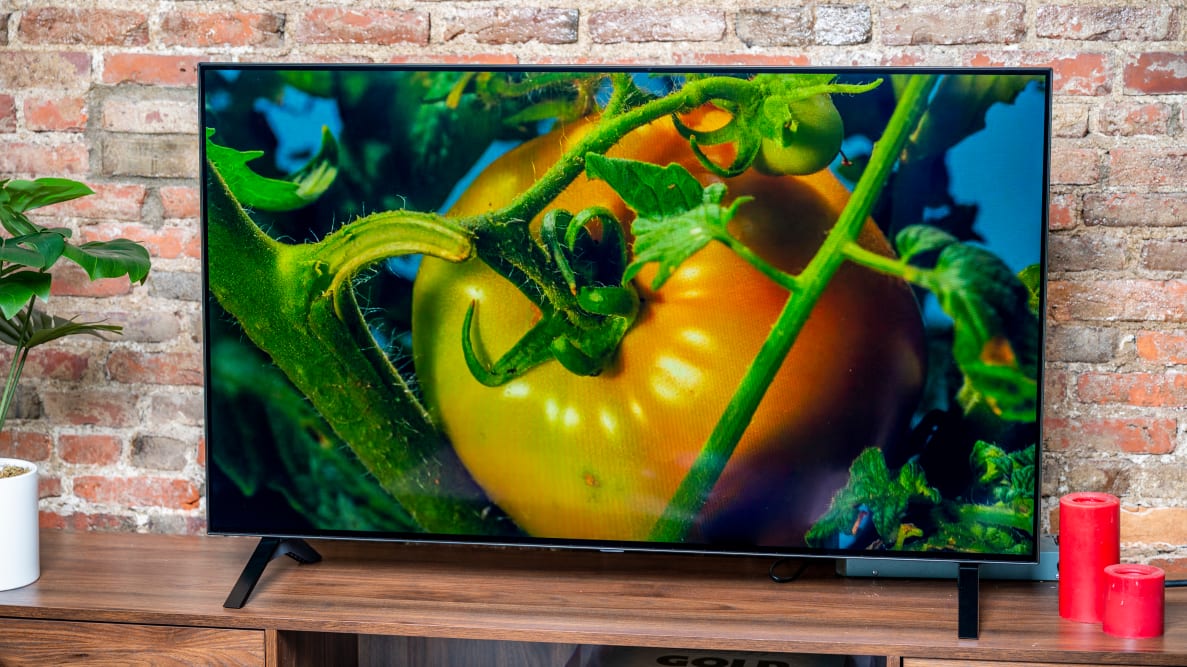Pros
-
Perfect black levels
-
Reliable, easy-to-use smart platform
-
Attractive design
Cons
-
Relatively dim 60Hz panel
-
No HDMI 2.1 or VRR
-
Color has slight blue-shift
The A1 could be a good fit for folks who covet the characteristically deep black levels and wide viewing angles of an OLED TV, but who have no need for gaming-centric features aimed at the Xbox Series X- or PlayStation 5. The TV's excellent contrast is a sight to behold, but its relatively dim panel will also struggle to hold up in brightly lit environments. And, if you’re a stickler for color accuracy, the A1’s blue-tinted out-of-the-box color may necessitate a professional calibration.
Essentially, the LG A1 is only a great TV because it’s an OLED TV. And despite being a notably affordable OLED, there are better TVs in this price range for gamers or folks with bright living spaces. Considering you can get LG's C1 OLED—which is both brighter and kitted out with multiple other enhancements—for just a little more money, the ideal buyer for the A1 may be limited.
About the LG A1 OLED
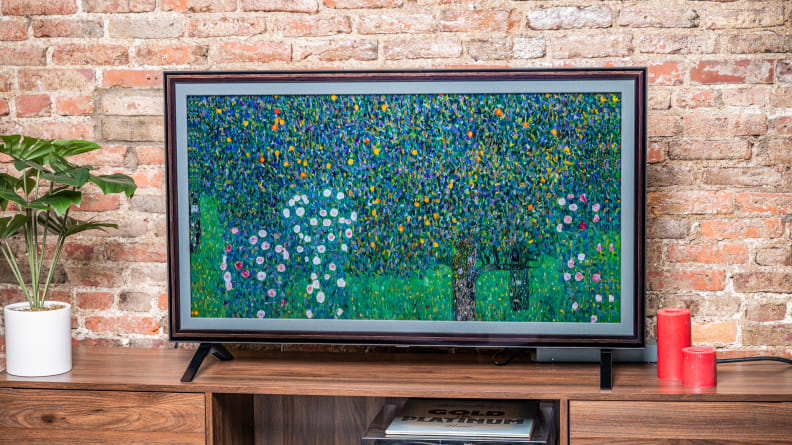
The A1 is available in four sizes, including this adorable 48-inch model.
LG’s A1 OLED TV series is available in four sizes, ranging from 48 inches all the way up to 77 inches. Our review unit is a 48-inch model that we purchased ourselves. Here’s how the series’ sizes stack up in terms of price:
- 48-inch (LG OLED48A1PUA), MSRP $1,099.99
- 55-inch (LG OLED55A1PUA), MSRP $1,199.99
- 65-inch (LG OLED65A1PUA), MSRP $1,599.99
- 77-inch (LG OLED77A1PUA), MSRP $2,699.99
Typically, we don’t expect there to be significant differences between various sizes belonging to the same series, and this is especially true for OLED TVs since their panel hardware is more or less the same from one size to the next.
Here’s a rundown of specs shared by each size in the A1 series:
- Resolution: 4K (3,840 x 2,160)
- Display type: OLED
- HDR support: Dolby Vision, HDR10, HLG
- Dolby Atmos: Yes (native decoding and over eARC)
- eARC support: Yes
- Native refresh rate: 60Hz
- Smart platform: webOS 6.0
- Color: DCI-P3 color space/10-bit chroma resolution
- Variable Refresh Rate (VRR): No
- Auto Low Latency Mode (ALLM): Yes
- Other features: Google Assistant, Amazon Alexa, Apple AirPlay 2, Apple HomeKit
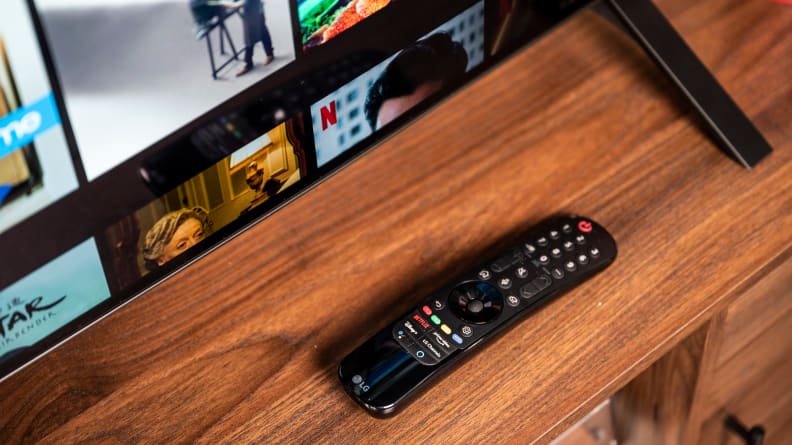
The LG Magic Remote offers gesture controls, so users can point and click their way through menu options as if they were using a Nintendo Wii remote.
Each A1 OLED TV arrives with the newest iteration of LG’s Magic Remote, which includes gesture-based motion controls. If a traditional clicker experience is what you’re comfortable with, you can always forgo the Magic Remote’s point-and-click functionality in favor of its directional pad.
Performance data
Before testing each TV, we make sure the panel is on and receiving a continuous signal for at least 24 hours, allowing the pixels plenty of time to warm up. Our 48-inch A1 received this standard warm-up time before any readings were taken. In addition, the TV received the latest firmware updates at the time of testing.
For SDR tests, we used LG’s “ISF Expert (Bright Room)” picture mode. For HDR tests, we opted for LG’s “Cinema Home” picture mode. We’ve chosen these picture modes because of their accuracy, but performance may vary depending on which picture mode is enabled. For example, you’re likely to experience a brighter picture with different settings enabled, but it may interfere with color temperature and overall color accuracy.
To get a sense for the TV’s average performance, we use a standard ANSI checkerboard pattern for most of our basic contrast tests. We also use white and black windows ranging from 2% to 90% to test how well the contrast holds up while displaying varying degrees of brightness.
Our peak brightness measurements are taken with sustained windows to represent the TV’s peak brightness over a sustained period of time. Specular highlights (like brief flashes of reflected light) might reach higher brightness levels, but not for sustained periods of time.
All of our tests are created with a Murideo Seven 8K signal generator and tabulated via Portrait Displays’ Calman Ultimate color calibration software. I'll expand on our test results throughout the review, but for now, here are some key takeaways:
• HDR contrast (brightness/black level): 217.2 nits/0.001 nits (ANSI checkerboard) • SDR contrast (brightness/black level): 211 nits/0.001 nits (ANSI checkerboard) • HDR peak brightness (sustained): 503.8 nits (2% white window) • HDR color gamut coverage (DCI-P3/10-bit): 96% • SDR color gamut coverage (Rec.709): 100%
These tests were carried out with the A1’s energy-saving settings disabled. In addition, most of the in-depth settings (“Black Level,” “Auto Dynamic Contrast,” “Noise Reduction,” etc.) were kept at their default setting for each chosen picture mode, and the “Gamma” setting was fixed at “2.2.”
Connectivity

There are three total HDMI 2.0 ports.
The A1 is outfitted with enough connectivity options for most folks, but A/V enthusiasts might find the selection lacking, as the A1 does not offer any HDMI 2.1 inputs—an aspect I’ll touch on later in the review.
Here’s what you’ll find in two small cutouts on the back of the panel:
- 3x HDMI 2.0 (1x eARC)
- 2x USB 2.0
- RF connection (cable/antenna)
- Ethernet (LAN) input
- Digital audio output (optical)
- 3.5mm headphone jack
What we like
Terrific contrast despite a relatively dim picture
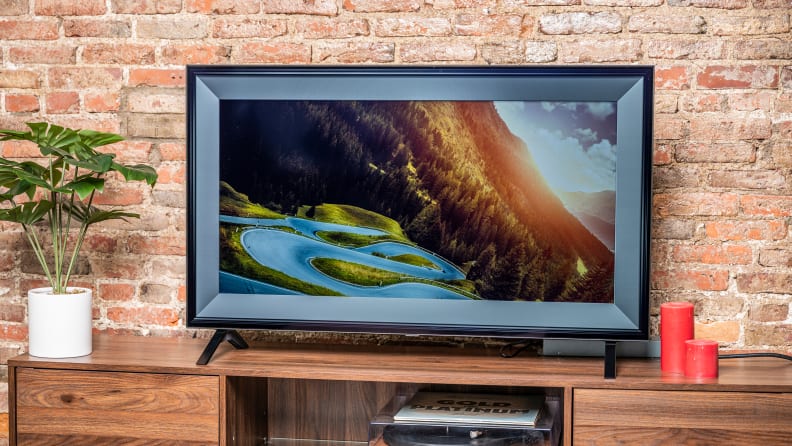
Being an OLED, the LG A1 is capable of perfect black levels.
The main benefit of OLED display technology isn’t its ability to get bright, but rather, its ability to get dark. While most TVs rely on LED backlighting in order to illuminate the display’s pixels, OLED TVs are self-illuminating, meaning each individual pixel can fully adjust its illumination independently of the others. The results are picture-perfect black levels (0.001 nits) and pixel-level contrast control, which not only looks awesome but also improves just about every other aspect of performance, from color production to screen uniformity.
This impressive tech is the reason the LG A1 looks phenomenal no matter what you happen to be watching—though HDR content stands out in particular. It’s a picture free from light bloom (present when LED TVs’ backlight elements are visible when they shouldn’t be), with perfectly rendered shadow gradation and an immense amount of detail.
When viewed side-by-side with an LCD/LED TV, the benefits of OLED TVs are unmistakable. But while top-of-the-line LED TVs can’t quite match an OLED TV’s shadow depth, OLED TVs aren’t yet able to match the sheer brightness of a premium LED or QLED TV (more on this later).
Still, unless you’ve got a particularly well-lit living space, you don’t necessarily need the blazing brightness of a high-end LED TV like the Samsung QN90A or the Hisense U8G. In addition, if you’re the type of person who prefers to dim the lights during movie night, the LG A1 is a great fit—the incredible contrast makes for a picture that pops in the dark.
Razor-thin design that’s quintessentially OLED

The panel itself is about as thin as an iPhone.
As mentioned above, OLEDs don't have backlights and their self-lighting pixels make for awesome picture quality—but they also make for some super-thin TVs. No backlight means there's a lot less tech to fit in the display. The A1 is as thin as an iPhone from the side, only gaining bulk around the midsection to accommodate for internals. It’s a design element that’s sure to turn heads.
If there’s one thing about the A1’s look and feel that’s a bit disappointing, it’s the TV’s stand design. I’m used to seeing OLED TVs with stands that give off a somewhat quirky air of sophistication, but the A1 is stuck with a decidedly garden-variety stand design: two boomerang-shaped feet that lift the panel from out towards the corners. It’s a familiar look if you’ve seen just about any new TV in the last few years.
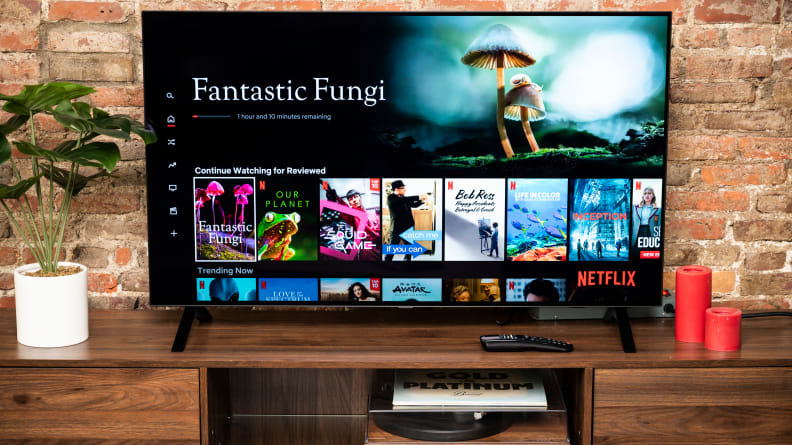
Like most contemporary TVs, the LG A1 sits atop two wide-set, boomerang shaped feet.
Despite LG punting on this aspect of the design, the A1 is sure to look good in just about every room, regardless of the room’s aesthetic. Thanks to its narrow profile and ultra-slim panel, it’ll look especially pleasing from a wall-mounted position.
Some of the widest viewing angles in the game
If world-class contrast and a wildly thin panel weren’t enough to get you on the OLED bandwagon, consider this: OLED TVs feature the widest viewing angles money can buy right now.
The LG A1 is quite accommodating for group viewings for this reason. Even if you happen to be sitting at an off-angle position—say, two to four feet away from a head-on seat—the picture retains its impressive contrast and there’s no color shifting to speak of. This is not the case for the majority of LED TVs, whose picture quality tends to degrade (sometimes drastically) during off-angle viewing.
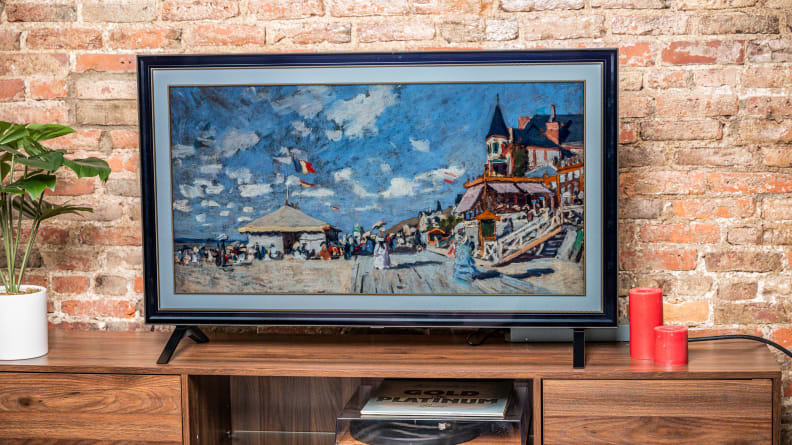
OLED TVs offer some of the widest viewing angles you can currently get. Even if you sit a few feet away from a direct viewing angle, the picture holds up.
A TV’s viewing angles are important no matter what size you’re shopping for, but they’re especially important if you’re in the market for anything 65 inches or above. When it comes to viewing angle reliability, the 77-inch A1 is among the best in its size bracket thanks to the nature of OLED displays. It’ll be a great fit for group viewings.
A smart platform that gets the job done
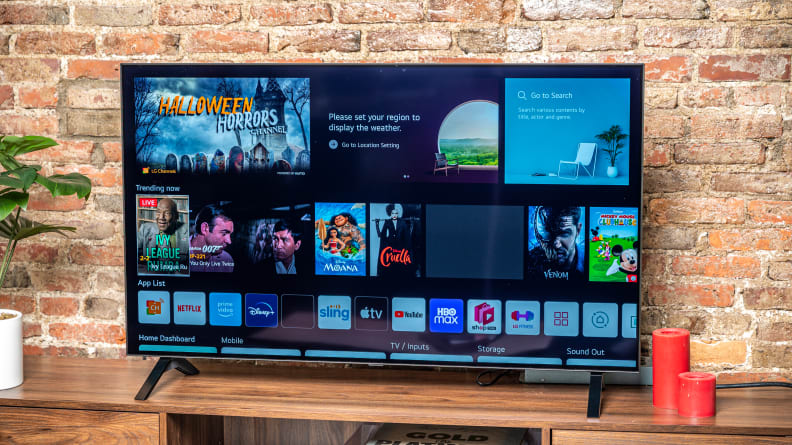
webOS isn't our favorite smart platform going right now, but it offers plenty of software flexibility and it's generally easy to use.
Although LG’s webOS isn’t currently my favorite smart platform (that honor goes to Roku), it’s nevertheless a good companion to have along for the ride thanks to its flexibility and basic navigational experience.
While older versions of webOS mostly isolated its user interface to a bubbly menu on the bottom third of the screen, this new iteration offers a more traditional approach: a home screen with customizable app icons, the TV’s input selection, and yes—a bunch of sponsored content. Fortunately, it never feels like I’m drowning in sponsored content while using webOS (though I’d appreciate a way to limit my exposure).
If there’s anything you’re missing out of the box, LG’s app store offers plenty of content, and there’s a very good chance that the app you’re looking for is there. The software itself hustles along without any lag time, too, which goes a long way in making the overall experience a pleasant one.
If you’d rather not rely on webOS, you could always pair the A1 with a dedicated streaming device, but if you’re not particularly fussy about your smart TV experience, LG’s software is flexible and friendly enough to do the job on a daily basis.
What we don’t like
Dimmer than most TVs in its price range
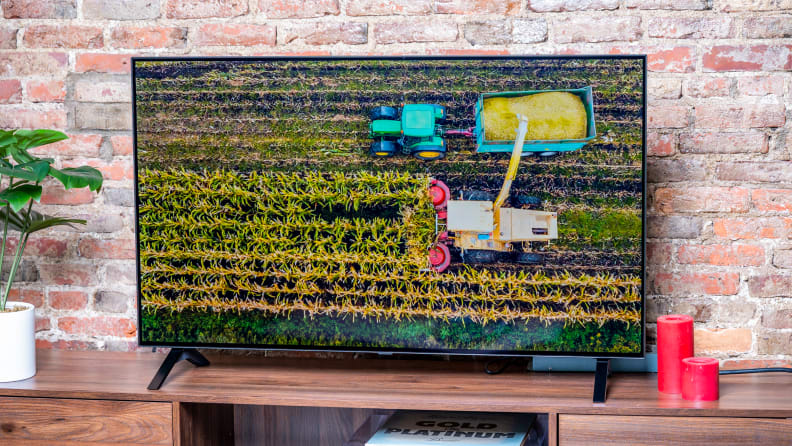
The A1 features a dim panel compared to other TVs in its price range and compared to other, pricier OLED TVs.
OLED displays still lag behind traditional LED displays when it comes to brightness, and the difference is especially stark when the LED TV in question is in the A1’s price range. At its brightest in HDR, the A1 is capable of a little over 500 nits. However, an upper-tier LED TV with a similar price tag—something like the Hisense U8G or the Vizio P-Series Quantum—might offer peak brightness levels of between 900 and 2,000 nits, depending on the content.
The A1 is also dimmer than most of the OLED TVs currently occupying the same store shelves. The LG G1 and Sony A90J, while an order of magnitude more expensive than the A1, offer HDR brightness in the 700- to 800-nit range. The LG C1 is only marginally more expensive than the A1 but still pushes its panel to 700-750 nits during HDR.
And if you really want to dive deep, last year’s Vizio OLED, which is still available for roughly the same price as the LG A1, is a hair brighter than the A1 during HDR (we clocked Vizio’s OLED at around 500 to 600 nits).
Make no mistake: Thanks in part to the A1’s perfect black levels, it will surely look fantastic in most situations, particularly when the viewing environment is dimly lit or completely dark. But if you’ve already committed yourself to spending A1-level money on a TV and your living room gets a fair amount of light, you may find that a brighter OLED—something like the LG C1—is worth the extra dough. Alternatively, an LED TV in this price bracket will deliver a much brighter experience.
Out-of-the-box color needs calibrating
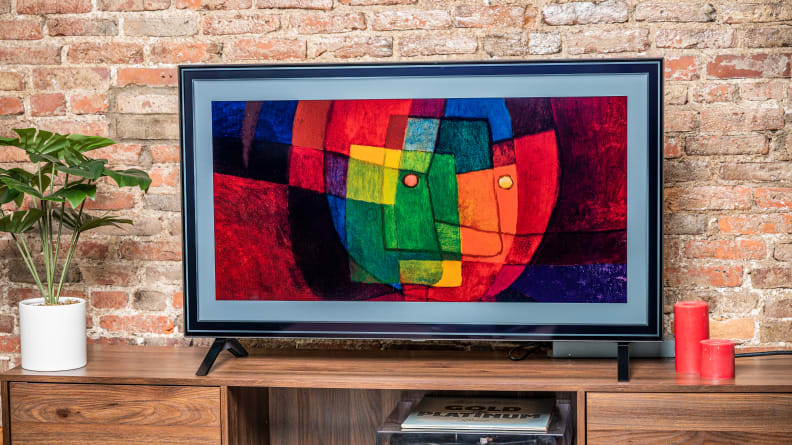
While the A1's color production is quite impressive, its out-of-the-box calibration tends to emphasize blue. A professional calibration will go a long way in correcting these color points.
The LG A1 is bursting with rich, well-saturated colors. It offers 100% coverage of the SDR color gamut (Rec.709) and covers about 97% of the wider HDR gamut (DCI-P3), and to the naked eye, greens and reds pop about as much as they do on an LED TV enriched with quantum dots, often referred to as "QLED." Unfortunately, the A1’s out-of-the-box color is pushing blue something fierce—even on its most accurate, pre-calibrated picture modes.
I imagine most folks won’t notice the TV’s penchant for blue hues, particularly if they spend most of their time using one of the A1’s brighter, more vivid picture modes. To my eye, the cooler coloration was most noticeable during darker scenes, where dark gray shadows, fabrics, and set dressings appear to have a blue tinge. The effect was significantly worse during HDR content, and testing only confirmed the story my eyes were telling me: the TV’s white point is skewed significantly toward blue, which has a cascading effect on the rest of the grayscale.
That said, my job involves staring at—and often over-analyzing—several TVs per month. So, as the saying goes, your mileage may vary.
Still, I do suspect that a significant amount of shoppers in the market for an OLED might notice (and care about) such an issue. After all, if you’re familiar with high-end display tech, there’s a good chance you’re expecting an OLED TV—even one on the affordable end of the spectrum—to simply hit its marks closer right out of the box. Heck, I expected it.
You could always pay a professional to have your A1 calibrated, which would go a long way toward getting those cooler tones in check. At that rate, however, you begin to spend the money you thought you were saving by purchasing one of the most affordable OLED TVs on the market.
It’s also worth mentioning that this kind of blue push is often the result of trying to eke as much brightness out of a panel as possible. This could mean that, were its color balanced out during calibration, the already-dim A1 might be even dimmer.
Occasional motion judder
While most OLED TVs come equipped with a native refresh rate of 120Hz (which allows for playback at 120 frames per second, depending on resolution), the LG A1 is locked in at 60Hz. Not only does this mean native 120fps content is out of the question, it also hampers the A1’s ability to display relatively judder-free motion during certain film content.
In addition to some standard motion-related test patterns, one of the motion tests I administer to most of the TVs I review these days involves the opening title sequence of Our Planet on Netflix. The sequence depicts Earth rapidly spinning, its landmasses shifting out of darkness into the light of day. At its best—on a 120Hz TV with top-of-the-line motion handling—this scene carries along smoothly, as the image is processed in such a way that limits judder and smearing. When a TV struggles to display motion smoothly, the globe—and its continents—appear to stutter.
This is precisely what I noticed when watching the title sequence unfold on the LG A1. From there, sweeping tracking shots within the episode only served to reinforce the issue. The A1 just isn’t equipped to deal with fast-paced visual information as effectively as some of the pricier OLED TVs we’ve tested this year, including the LG C1, the Sony A90J, and the LG G1.
The A1 offers several onboard motion enhancements that can be tinkered with to your liking. “Cinema Screen” limits judder during cinematic content (24fps), while the “De-Blur” and “De-Judder” sliders can be tweaked on an incremental basis, should you prefer motion interpolation customization over a preset. That said, these settings aren’t a magic wand, and may introduce motion effects that you might find to be more distracting than the judder itself.
Lacks important next-gen gaming features
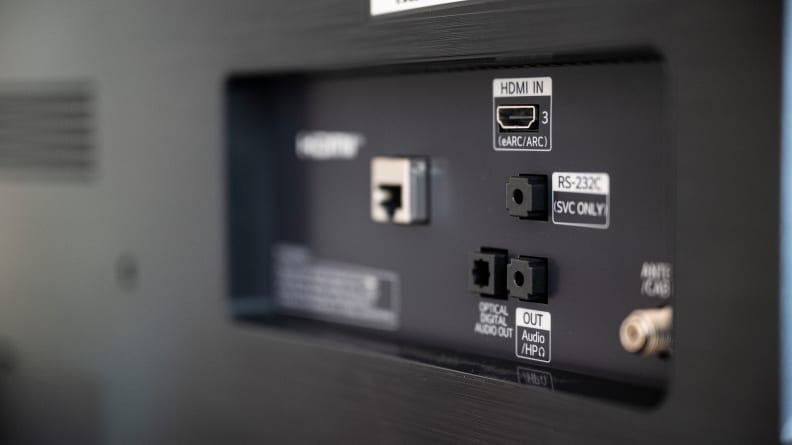
The LG A1 lacks HDMI 2.1 ports and does not support 4K gaming at 120fps, nor does it support Variable Refresh Rate (VRR).
Due to the limitations of the A1’s hardware (and its lack of HDMI 2.1), 4K gaming at 120fps is out of the question. And although the A1 supports Auto Low Latency Mode (a feature that automatically optimizes the TV’s settings for gaming whenever a console is detected), it does not support Variable Refresh Rate (VRR). VRR is a sought-after feature among gamers because it ensures that the frames on the TV are properly synchronized with whatever the console is outputting, effectively eliminating screen tears during gameplay.
If you own (or plan on owning) a PlayStation 5 or Xbox Series X, it’s worth asking yourself if it makes more sense to invest in a TV that supports features like 4K gaming at 120fps and VRR. After all, this advanced level of gaming is precisely what these next-gen consoles are all about, and if they’re important to you, you might come to regret not having them in your back pocket for several years to come.
Should you buy it?
Maybe—but only if you fall into a very specific category of shopper
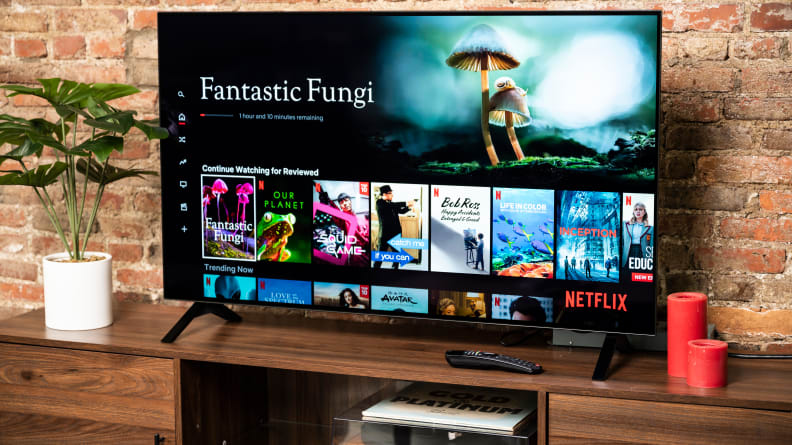
The LG A1 is a good fit for folks who don't mind missing out on next-gen gaming features and don't plan on putting their new TV in a brightly lit environment.
It’s hard not to be impressed with the LG A1’s picture; one glance at an OLED TV’s ultra-deep black levels and terrific uniformity is enough to stop videophiles in their tracks. But the story doesn’t stop there, and unless you meet a specific criteria, there are better options out there to explore.
If OLED performance is what you crave and you’re not an avid gamer, the A1 is a good compromise, as it mostly delivers the sort of picture quality we’ve come to expect from an OLED TV for less than these TVs typically cost. Just bear in mind that the A1’s picture is dimmer than most TVs in this price range, and its out-of-the-box color calibration falls short of higher-end OLEDs.
If you’re planning on getting a ton of mileage out of next-gen consoles for the foreseeable future, or if you just have a really bright home environment, the A1 probably isn’t your best bet. The LG C1, our Best TV of the year at time of publication, comes equipped with all of the next-gen gaming features you’ll need—and it gets significantly brighter than the A1. For an even brighter experience, the Hisense U8G and Vizio P-Series Quantum are similarly priced to the A1, and will hold their own in bright rooms better. Plus, they’re a much better fit for gamers.
If all you want is an OLED display for the lowest possible price, the A1 delivers just that. But its limitations—namely, its lack of gaming features, the dim picture, and its oft troublesome motion handling—can all be addressed by spending more on a better OLED or buying a similarly priced LED TV. The A1 is a good TV, but it’s best suited for a very narrow slice of the TV-shopping crowd.
Meet the tester
Michael Desjardin graduated from Emerson College after having studied media production and screenwriting. He specializes in tech for Reviewed, but also loves film criticism, weird ambient music, cooking, and food in general.
Checking our work.
Our team is here to help you buy the best stuff and love what you own. Our writers, editors, and experts obsess over the products we cover to make sure you're confident and satisfied. Have a different opinion about something we recommend? Email us and we'll compare notes.
Shoot us an email